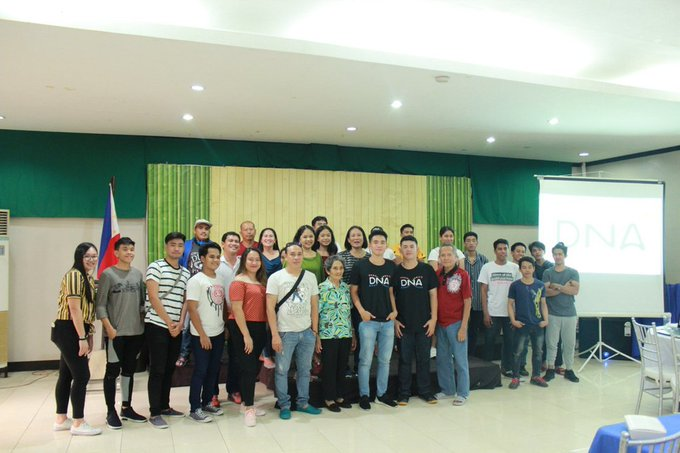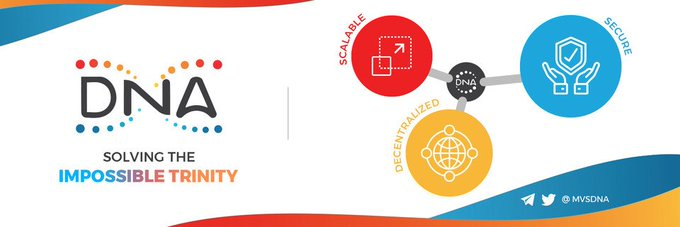
Since the first implementation of blockchain technology arrived with the Bitcoin network in 2008, ensuring adequate scalability has always been top of the agenda. Unlike traditional payment processors and databases, blockchains must remain scalable whilst also providing cryptographic security guarantees and adequate decentralization, a challenge blockchain experts have been trying to solve for a long time.
You may have read or heard these experts remarking that blockchain must solve its scalability issues before it can achieve widespread use. However, what scalability actually looks like in practice is ambiguous, and many users don’t fully understand the importance or relevance of blockchain scalability. In that regard, here we examine the importance of scalability and more practically, what happens when a blockchain can’t scale.

What is blockchain scalability?
Scalability refers to the limitations of a blockchain network when it comes to processing transactions. Scalability doesn’t just have to be limited to transactions of value on a blockchain protocol, it can concern any transaction made on the network — such as those between participants on a decentralized application.
Transaction speed, and therefore the ability of a blockchain to scale, is usually judged by how many transactions per second or TPS the network can handle. Most often, when blockchains boast a high TPS, they are making significant compromises in other critical areas — be it decentralization or security.
Many blockchain experts call this the ‘scalability trilemma’ or the impossible trinity, the challenge of building a secure and scalable network without becoming centralized and therefore no longer representing a truly distributed network. This issue has become of critical importance for the adoption of blockchain technologies. Although in their current state blockchains are more secure and trusted than traditional databases, their inability to handle high transaction throughput has limited their enterprise use cases.

What happens when a network can’t scale?
As we saw early on with the Ethereum-based dApp Crypto Kitties, insufficient network scalability can have serious consequences for all transactions on the chain. Crypto Kitties paralyzed the Ethereum network in late 2017 when users were making so many transactions that fees went through the roof and transactions took many hours to process. The cryptographic pets caused a six-fold increase in transactions on the Ethereum network and pushed transaction costs, known as gas, up significantly.
More recently, news emerged in August that the Ethereum network was once again reaching the upper bounds of its limitations, with transaction costs rising to such an extent that some users may be unable to afford to make transactions on the network. Speaking to financial news website Bloomberg Vitalik Buterin, creator of the Ethereum protocol, explained how the USD stablecoin Tether was mostly to blame for overloading the Ethereum network.
Buterin remarked that the Ethereum blockchain had been ‘almost full for years’, and in the future scalability would have to be a top priority for developers. Since Tether has exploded in popularity as a safe hedge against cryptocurrency’s daily volatility, scalability has suffered. Tether uses a huge portion of the Ethereum network, generating $260,000 in gas fees in just a 30-day period. Naturally, Tether is just one project built on top of Ethereum, and if there is to be any chance of attracting new projects to the network it must be capable of handling hundreds or thousands of applications at once.
This issue isn’t limited to Ethereum, although the protocol has been at the bleeding edge of the scalability dilemma for a long time due to its popularity in building dApps and deploying smart contracts. Similarly, other public and permissionless ledgers that are open-source and free to build on also face significant scalability issues. Without a real scaling solution, this issue is likely to persist.

How are other blockchains working towards scalability?
The Bitcoin Lightning Network is one of the first serious attempts at scaling the transactional capacity of the Bitcoin blockchain. Satoshi Nakamoto’s original vision for Bitcoin was digital cash that could be used to make almost instantaneous payments worldwide. Therefore, the sluggish transaction speed which had become so common on the Bitcoin network was unacceptable.
The Lightning Network is a second-layer protocol deployed on top of the Bitcoin blockchain which allows fast transactions between participant nodes. Lightning Networks can now be deployed on other blockchains, and in essence, these networks allow transactions to be processed without broadcasting and waiting for validation from the underlying blockchain — greatly reducing settlement times.
However, blockchain networks become more complex when dApps and smart contracts can be deployed, as discussed with the Ethereum network. Some blockchain experts have proposed a method known as ‘sharding’ to resolve scalability concerns. Sharding doesn’t require nodes to store a full record of the blockchain’s history, and instead, each node only stores a subset of data to verify transactions, which would help to reduce block times.
There are many more methods that have been explored to increase scalability, including off-chain transactions, sidechains, plasma networks and more. However, the issue with many of these solutions is that until recently, many have required a trade-off to either security or decentralization.

How does Metaverse achieve scalability?
There are other emerging protocols implementing new technologies to deal with the scalability issues described above. Many are using lightning channels tailored to their own blockchains, creating side chains, or using solutions such as Segwit. However, a few projects are deploying more novel solutions, like running two parallel blockchain protocols side-by-side.
Metaverse achieves scalability while also maintaining security and decentralization through their Dualchain Network Architecture, or DNA protocol. Metaverse DNA uses delegated proof of stake, or dPoS, to ensure block times are extremely fast while also providing a fair and transparent way for network participants to reach consensus. Likewise, by deploying integrated lighting channels, transactions are virtually instantaneous.
By using two chains, Metaverse can enable fast transaction speeds with low fees, and allow more data to be stored on-chain. The DNA protocol can be deployed on any public and permissionless blockchain, and as such can be used as a standard for other blockchains. From here, users can issue standardized APIs and protocols which would enable data, assets, digital identities and smart contracts to be deployed on-chain.
As one of the first protocols to deploy a Dualchain system, Metaverse seeks to alleviate the issues associated with scalability, while also providing cryptographic security guarantees and maintaining the decentralization of our network.

Problem Definition
To enable two or even multiple parties to exchange assets there is a need for a protocol that guarantees the following requirements:
let users exchange asset α for asset β
not require a third party
asset safety in case of a cancellation or connection failures
asset security against malicious trading partners
The Protocol

1. Alice and Bob generate a multi signature wallet
2. Alice creates a transaction AMα in which she transfers the asset α from her wallet A to the multisig wallet M. Bob creates the transaction BMβ.
3. Alice and Bob exchange the hashes of their transactions. To make it easier we can assume that the assets that are sent to the multisig wallet are in output index 0 of the transactions. Otherwise they would also have to communicate the index numbers.
4. One party (lets use Alice in this example) generates reversal transactions MAα and MBβ. Alice can create the transactions because she knows the hash of Bobs transaction BMβ and therefore she can add the output index 0 as the input of the reversal transaction MBβ. Also she can create the target transaction MAβMBα that takes the same inputs as MBα and MBβ combined.
5. Alice signs the reversal transactions MAα and MBβ and sends them to Bob.
6. Bob verifies that the transactions have the expected properties. Then he signs them and sends them back to Alice.
7. Alice verifies that the signature of the reversal transaction MAα is valid. Then she signs MAβMBα and sends it to Bob.
8. Bob signs MAβMBα and sends it back to Alice.
9. Alice can now broadcast her transaction AMα knowing that she could broadcast the completely signed reversal transaction MBα. Same is true for Bob so he can broadcast BMβ.
10. Both or one party can broadcast the target transaction MAβMBα that will use the outputs from AMα and BMβ and send the exchanged assets to the counter party.
11. Both wait for confirmations of the target transaction. In case of problems any party can broadcast their reversal transaction to refund their assets. Because Metaverse is based on UTXO (unspent transaction outputs) only the target or the reversal transactions can be included on the main chain.
THE DNA TOKEN

ROADMAP

Built on three core blockchain pillars: Security, Scalability, and Interoperability; The Dualchain Network Architecture (DNA) by Metaverse

CONCLUSION
Metaverse is the dawn of a new era for the Blockchain industry and the entire world. It eliminates the imperfections which made Blockchain an inefficient technology and delivers to the users a very beneficial, scalable, decentralized and secure system, where operations are carried out at a fast rate. Metaverse is taking the world into a new reality.
Website: http://mvsdna.com/
Twitter: https://twitter.com/mvsdna
Facebook: https://www.facebook.com/MVSDNA
Medium: https://medium.com/metaverse-blockchain
Telegram: https://t.me/mvsdna
DNA White Paper: http://mvsdna.com/MVS%20Dualchain%20White%20Paper.pdf
Metaverse White Paper: http://mvsdna.com/Metaverse-Whitepaper.pdf
AUTHOR
Bitcointalk Username: Dewi08
Telegram Username: @ dhewio8
Bitcointalk url: https://bitcointalk.org/index.php?action=profile;u=894088
Metaverse wallet Address: MF5Eh2VC7BqrDFu9M38bqDmJveQHrMvkjJ